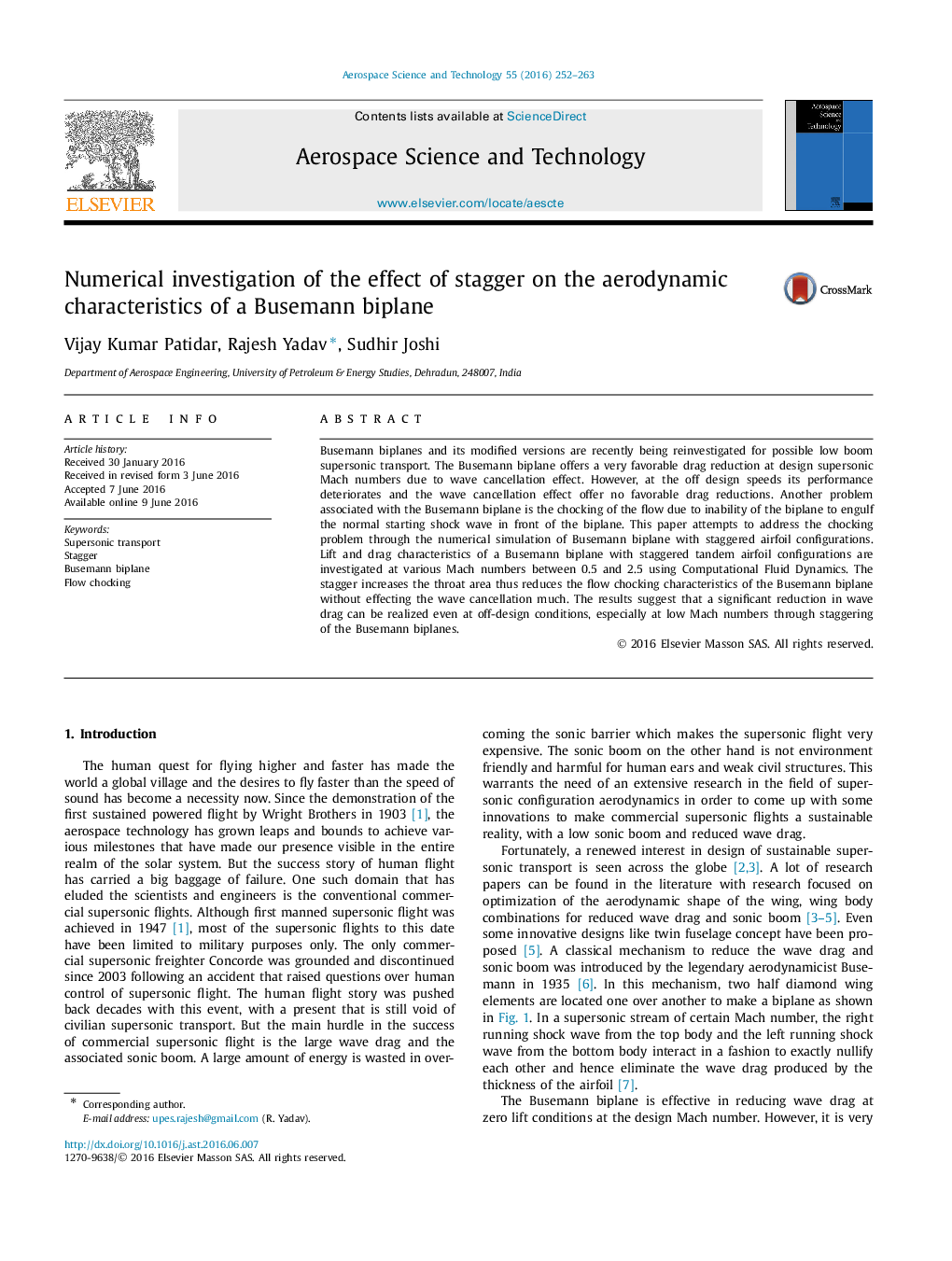| Article ID | Journal | Published Year | Pages | File Type |
|---|---|---|---|---|
| 1717557 | Aerospace Science and Technology | 2016 | 12 Pages |
Busemann biplanes and its modified versions are recently being reinvestigated for possible low boom supersonic transport. The Busemann biplane offers a very favorable drag reduction at design supersonic Mach numbers due to wave cancellation effect. However, at the off design speeds its performance deteriorates and the wave cancellation effect offer no favorable drag reductions. Another problem associated with the Busemann biplane is the chocking of the flow due to inability of the biplane to engulf the normal starting shock wave in front of the biplane. This paper attempts to address the chocking problem through the numerical simulation of Busemann biplane with staggered airfoil configurations. Lift and drag characteristics of a Busemann biplane with staggered tandem airfoil configurations are investigated at various Mach numbers between 0.5 and 2.5 using Computational Fluid Dynamics. The stagger increases the throat area thus reduces the flow chocking characteristics of the Busemann biplane without effecting the wave cancellation much. The results suggest that a significant reduction in wave drag can be realized even at off-design conditions, especially at low Mach numbers through staggering of the Busemann biplanes.
